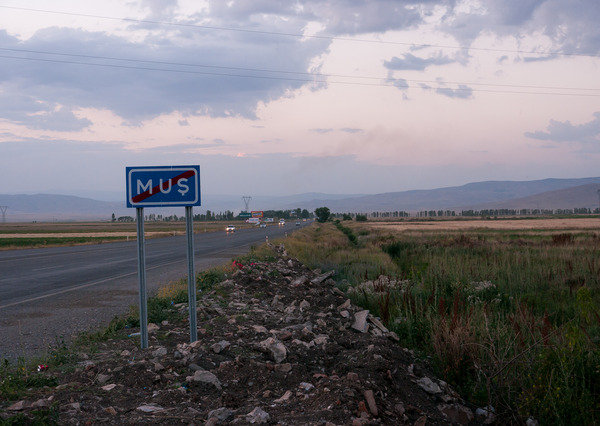Uriel Orlow / Becky Beasley
dal 25/1/2013 al 30/3/2013
Segnalato da
25/1/2013
Uriel Orlow / Becky Beasley
Spike Island, Bristol
'Back to Back' marks the first time that Uriel Orlow presents two recent films together in the UK: Remnants of the Future and Plans for the Past. In 'Spring Rain' Beasley explores relationships between photography and objects, the body and interiority in a way that is highly subjective.

Uriel Orlow - Back to Back
Back to Back marks the first time that London‐based artist Uriel Orlow presents two
recent films together in the UK: Remnants of the Future (2010–2012) and Plans for the
Past (2011–2012). Accompanied by drawings, photographs and research materials, the
exhibition as a whole reflects the artist’s wider interest in what he terms “the blind spots
of history” where, in the overlooked aftermath of localised conflicts and catastrophes,
inhabitants adapt to the challenges of daily life with ingenuity and dignity.
The exhibition title refers to the manner in which the works are projected — simultaneously
as one piece — as well as to the movie industry term for the process of filming two or more
films within one production. Though they were not filmed at the same time, each
anticipates and acts as a counterpart to the other. They are linked by a focus on the
forgotten fates of two towns in the South Caucasus that share a name, Mush, and together
form an installation that ruminates on forgotten tragedies and disrupted destinies.
Remnants of the Future is a haunting portrait of Mush, a large‐scale housing project in
northern Armenia initiated after a major earthquake in 1988 left thousands of people
homeless. The construction was abandoned when the Soviet Bloc collapsed in 1991, leaving
a readymade ruin without a past or future. Plans for the Past in turn explores the Mush that
provided the name for its Armenian counterpart.
Once a flourishing town in Eastern
Anatolia (now modern day Turkey), it became the site of massacres and deportations during
the Armenian genocide of 1915. Traces of previous attempts to erase an entire people are
still visible in the scarring on domestic and religious buildings.
Orlow spends weeks on location, carefully observing and constructing each image, and the
films resemble beautifully composed documentaries. The artist, however, also weaves
fictional elements into the videos: electronic soundscapes of dying stars mingle with
everyday noises, whilst folk songs sit alongside the computerised voice of a time travelling
character from Vladimir Mayakovsky’s satirical play The Bathhouse.
These interventions
draw attention to the artist’s or historian’s role in constructing a version of reality and the
power that such an act holds. By evoking unresolved pasts and unrealised futures, Orlow
acknowledges history’s simultaneity with our present and the intricate web that connects
time, space and representation.
---
Becky Beasley - Spring Rain
British artist Becky Beasley explores relationships between photography and objects,
the body and interiority in a way that is highly subjective and yet developed
through deep immersion in the thoughts and methods of other artists and writers.
Arguably a wildly ambitious endeavour, like a contemporary Don Quixote, Spring Rain
attempts to catch life in all its complexity, offering a richly informed yet
joyously simple and deeply enigmatic meditation on the passages of human encounter
and experience.
The title of the exhibition is taken from a short story by Jewish American writer
Bernard Malamud (1914-1986). A minimal tale of the ambiguities of everyday human
relations, of things unsaid or unsayable, the story opens onto concerns that lie at
the heart of Beasley's practice. The exhibition adopts the story's cyclical
structure, offering a passage through three spaces that embody distinct encounters
with self and others.
Another reference central to Beasley's thinking for this exhibition is Étant donnés
(1946-1966), the canonical installation by Marcel Duchamp. Created secretly towards
the end of his life, it offers a view through peepholes onto an ambiguous
constructed scene. This sealed, unknowable interior that looms so large at the heart
of twentieth century art history informs a specially commissioned linoleum floor
piece by Beasley.
The rhythms and forms of daily life are also a source of inspiration for the artist.
Throughout the exhibition cucumbers operate variously as proxies for vitality,
growth, reproduction and acts of tending and nurturing. Multiple brass casts of tiny
gherkins form a shimmering mobile - the spring rain of the title - while photographs
of curly cucumbers shot on stark white backgrounds, like marks made on paper, push
towards language. The artist frequently reflects on family, and on 16 March her
father, Peter Beasley, will be in the gallery to meet visitors.
These new works are accompanied by two displays of work by other artists selected by
Beasley. The first is a grouping of Richard Hamilton's Interiors prints, while the
second consists of photographs of vegetables by Charles Jones, a Victorian gardener
and self-taught photographer. These bodies of work reflect Beasley's interest in
still life and the domestic and have been significant in the development of her
practice.
For further information and high resolution images please contact Anna Searle Jones,
Communications Manager on 0117 929 2266 or anna.searle.jones@spikeisland.org.uk
Opening: Friday 25 January, 6-9pm
Spike Island
133 Cumberland Road, Bristol
Hours: Tuesday to Sunday, 11am to 5pm.
Entrance is free.



